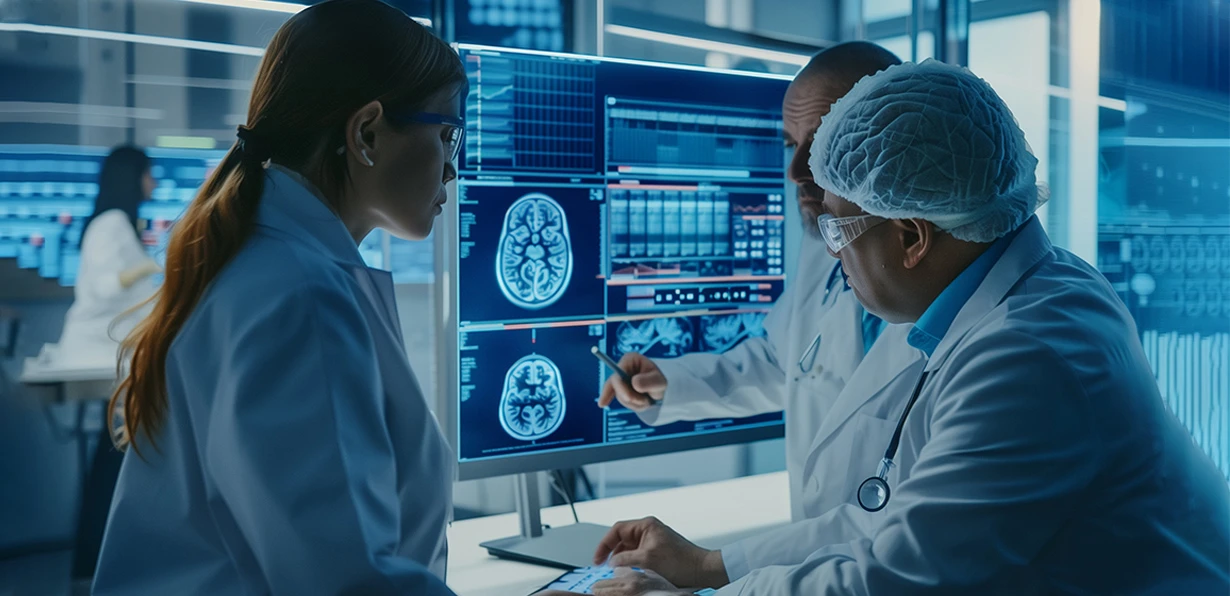Exploring the Boundaries of Deep Learning in Medical Diagnostics
In the realm of technology, it is necessary to know about the revolutionizing medical facilities that are upgrading the whole of healthcare. When it comes to medical diagnostics, the deep learning facility is a game changer.
Modern times have ushered in the advent of sophisticated AI that has not only started expediting diagnostic processes but has also improved their rightness, helping physicians come up with better decisions thanks to their improved accuracy. Although the field of deep learning within medicine is on a fast track, it is also filled with its issues and limitations. This blog will discuss the potential of using deep learning technology and its risks in medical diagnostics.
The Revolutionary Power of Deep Learning in Humanization
Deep learning, one of the ML branches, attempts to develop algorithmic solutions for modelling high-level abstractions in data. It achieves this by implementing a layered structure of algorithms called neural networks, which imitate how humans make decisions. This principle becomes even more powerful in analyzing medical data with great accuracy.
Efficiency and Speed: AI-driven diagnostic devices can analyse and process information at a speed that is impossible for human doctors to do. Analysis is done quickly, and as a result, the waiting time for diagnoses is greatly wasted, which is a critical factor in the effective treatment of acute and chronic diseases.
Personalized Medicine: Deep learning algorithms can be supplemented with other data types, such as genetic data, to specify individualized treatment for particular patients. Such individualization may generate improved treatment plans and efficient patient management.
Enhanced Diagnostic Accuracy: Deep learning models take pattern recognition to the next level, given their ability to identify subtle abnormalities that might otherwise go undetected by traditional medical imaging techniques such as radiology, ultrasounds, or computed tomography scans. For example, the AI models help detect small markers that denote diseases like cancer months, if not years, earlier, thus helping to intervene way ahead of time, early enough to further the patient’s survival chances.
Overview of the problems of medical deep learning
Apart from evident positives, the deployment of deep learning in medical diagnostics also has drawbacks and ethical issues.
Regulatory and Ethical Issues: AI deployment in healthcare raises many ethical issues. Who will be accountable if an AI-based diagnostic tool makes a mistake? How should we maintain patient privacy and data confidentiality? Regulatory bodies have yet to develop adequate frameworks that address these issues.
Data Quality and Availability: The quality of deep learning models’ efficacy is highly dependent on the quantity, quality, and diversity of the data on which they are trained. Inequitable or biassed data can result in erroneous predictions, potentially increasing health inequalities.
Integration into Clinical Workflows: Implementing AI tools in clinical practice in patients’ everyday lives substantially transforms the existing work procedures. Providers must be prepared for this, as they will require specific training to integrate these aids with their workflow, which should be connected with existing healthcare IT systems.
Interpretability: Highly complex deep learning models tend to behave as “white boxes” since the decision-making process is not visible. Lack of transparency is a significant barrier in any clinical setting, where healthcare providers must understand the basis of a diagnostic decision to gain their trust and accept the diagnosis.
The Growth of Deep Learning in the Future
Harmonising the efforts of technologists, clinicians, and regulatory bodies becomes crucial to addressing these obstacles. Research investments are the key to enhancing the algorithms’ precision and dependability. Besides, we may use datasets that are more careful to reflect the diversity of populations to prevent AI models from being biased.
Educating and training healthcare professionals on the potential of AI in diagnosis and its limitations is equally important. These programmes can ease the way in which AI tools are incorporated into clinical workflow, making them partners with healthcare staff rather than competitors.
In Conclusion
This blog has stated all the major issues and future growth measures to ensure that you have safe medical checkups by using this technology. Deep learning brings a shift and revolution to medical care by making the work easier. By pushing the boundaries of what AI can achieve while carefully navigating its limitations, the future of medical diagnostics looks both promising and profoundly transformative. If you want an AI alternative, contact Nettfy Technologies, who can change your working pattern by assisting you with the latest technology.


